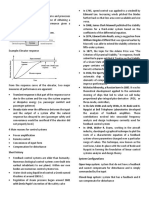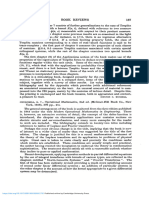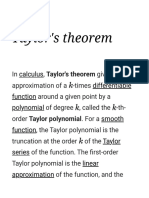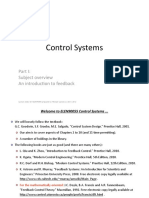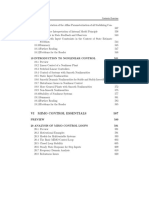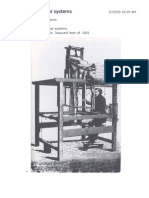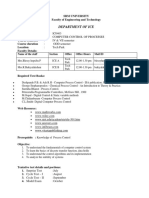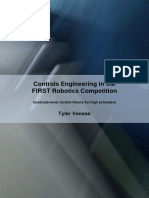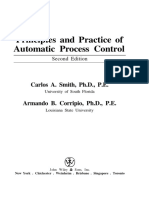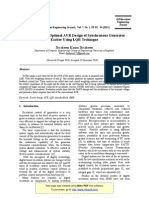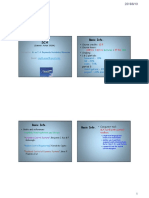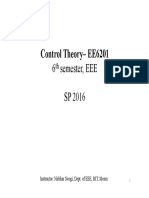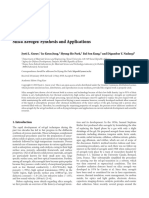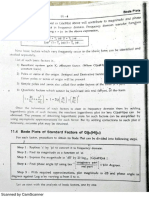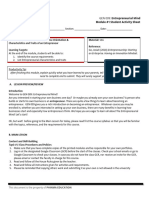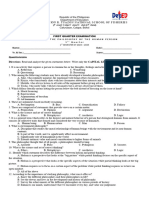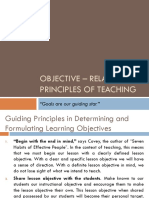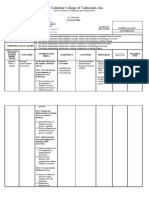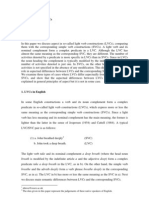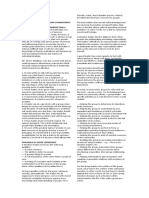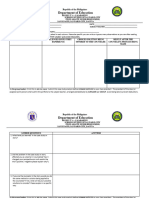CONTROL
ENGINEERING
CONTROL ENGINEERING
Dr.N.V.Raghavendra
Professor & Head
Dept. of Mechanical Engineering
The National Institute of Engineering, Mysore
8/30/2015
NVR
�Control Engineering
Syllabus
Sub Code
Hrs / Week
SEE Hrs : 3 Hrs
: ME0457
: 05
CONTROL
ENGINEERING
CIE
:
SEE
:
Max. Marks:
50 %
50 %
100
Course Prerequisites: None
Course Outcomes:
At the end of the course the student will be able to:
1. Translate various control systems into mathematical models and identify
the similarities.
2. Analyze the transient and steady state response of mechanical control
systems.
3. Compute transfer function of control systems using Block-diagram
reduction technique and Masons gain formula.
4. Appraise the stability of the control systems using graphical methods and
recommend improvements.
5. Demonstrate self learning capabilities.
8/30/2015
NVR
�Control Engineering
Syllabus
CONTROL
ENGINEERING
Unit 1:
Introduction: Concept of automatic controls, open and closed loop systems,
requirements of an ideal control system.
Mathematical Models: Models of Mechanical systems, Thermal systems,
Hydraulic systems and Electrical circuits.
Analogous systems: Force voltage, Force current. Models of DC (armature
controlled and field controlled) and AC motors on load.
SLE: Modelling of Gear train.
08 Hrs
Unit 2:
Transient and Steady State Response Analysis: Introduction, first order and
second order system response to step input, Concepts of time constant,
Accuracy, Error and its importance in speed of response. Characteristics of
under damped systems.
Types of controllers: Proportional, Integral, Differential, Proportional Integral,
Proportional Differential, Proportional Integral Differential controllers.
SLE: Study of various controllers in automated machines.
08 Hrs
8/30/2015
NVR
�Control Engineering
Syllabus
CONTROL
ENGINEERING
Unit 3:
Block Diagrams and Signal Flow Graphs: Transfer Functions definition,
block-diagram representation of system elements, and reduction of block
diagrams.
Signal flow graphs: Masons gain formula.
SLE: Transfer function of Multiple Input Multiple Output control systems.
08 Hrs
Unit 4:
Mathematical Concept of Stability: Rouths-Hurwitz Criterion.
Frequency Response Analysis: Polar plots, Nyquist Stability Criterion,
Stability Analysis, Relative stability concepts, concept of M and N circles.
SLE: Study of various ways of improving phase margin and gain margin.
10 Hrs
8/30/2015
NVR
�Control Engineering
Syllabus
CONTROL
ENGINEERING
Unit 5:
Root locus plots: Definition of root loci, general rules for constructing root
loci, Analysis using root locus plots for open loop transfer functions.
Applications of Root Locus Plot.
SLE: Importance of poles and zeroes for stability.
08 Hrs
Unit 6
Stability Analysis: Bode plots, Relative stability concepts, phase and gain
margin.
System Compensation and State Variables: Series and feedback
compensation, Introduction to state concepts, state equation of linear
continuous data system. Matrix representation of state equations,
Controllability and Observability, Kalman and Gilberts test.
SLE:State equation, and controllability and observability of spring mass
damper system
10 Hrs
8/30/2015
NVR
�Control Engineering
Syllabus
CONTROL
ENGINEERING
Text Book:
1. Automatic Control Systems by Farid Golnaraghi, Benjamin C. Kuo, John
Wiley & Sons, 2010.
Reference Books:
1. Feedback Control Systems: Schaums series 2001.
2. Control Systems Principles and Design: M. Gopal, TMH, 2000
3. Introduction to Automatic Controls, Howard L Harrison, John G Bollinger,
Second Edition July 1970.
CIE Assessment:
Written Tests (Test, Mid Semester Exam & Make Up Test) are Evaluated
for 25 Marks each.
Best of two of these tests will be considered for CIE.
8/30/2015
NVR
�What is a control system?
CONTROL
ENGINEERING
Generally speaking, a control system is a
system that is used to realize a desired
output or objective.
Control systems are everywhere
They appear in our homes, in cars, in industry, in
scientific labs, and in hospital
Principles of control have an impact on diverse fields as
engineering, aeronautics ,economics, biology and
medicine
Wide applicability of control has many advantages (e.g.,
it is a good vehicle for technology transfer)
Slides courtesy: Prof. Bin Jiang & Dr. Ruiyun QI
8/30/2015
NVR
�A brief history of control
CONTROL
ENGINEERING
Two of the earliest examples
Water clock (270 BC)
Self-leveling wine vessel (100BC)
The idea is still
used today, i.e.
flush toilet
8/30/2015
NVR
�A brief history of control
CONTROL
ENGINEERING
Fly-ball governor (James Watt,1769)
the first modern controller
regulated speed of steam engine
reduced effects of variances in load
propelled Industrial Revolution
8/30/2015
NVR
�A brief history of control
CONTROL
ENGINEERING
Birth of mathematical control theory
G. B. Airy (1840)
the first one to discuss instability in a feedback control
system
the first to analyze such a system using differential
equations
J. C. Maxwell (1868)
the first systematic study of the stability of feedback
control
E. J. Routh (1877)
deriving stability criterion for linear systems
A. M. Lyapunov (1892)
deriving stability criterion that can be applied to both
linear and nonlinear differential equations
results not introduced in control literature until about
1958
8/30/2015
NVR
10
�A brief history of control
CONTROL
ENGINEERING
Birth of classical control design method
H. Nyquist (1932)
developed a relatively simple procedure to determine
stability from a graphical plot of the loop-frequency
response.
H. W. Bode (1945)
frequency-response method
W. R. Evans (1948)
root-locus method
With the above methods, we can design control
systems that are stable, acceptable but not optimal in
any meaningful sense.
8/30/2015
NVR
11
�A brief history of control
CONTROL
ENGINEERING
Development of modern control design
Late 1950s: designing optimal systems in some
meaningful sense
1960s: digital computers help time-domain
analysis of complex systems, modern control
theory has been developed to cope with the
increased complexity of modern plants
1960s~1980s: optimal control of both
deterministic and stochastic systems; adaptive
control and learning control
1980s~present: robust control, H-inf control
8/30/2015
NVR
12
�CONTROL
ENGINEERING
Basic components of a control system
Plant
Controlled
Variable
Expected Value
Controller
Actuator
Sensor
Disturbance
8/30/2015
NVR
13
�CONTROL
ENGINEERING
Basic components of a control system
1.Plant: a physical object to be
Plant
Controlled
variable
Expected
value
8/30/2015
controlled such as a mechanical device,
a heating furnace, a chemical reactor or
a spacecraft.
2.Controlled variable: the variable
controlled by Automatic Control
System , generally refers to the
system output.
3.Expected value : the desired
value of controlled variable based on
requirement, often it is used as the
reference input
�Basic components of a control system
Controller
CONTROL
ENGINEERING
4.Controller: an agent that can
calculate the required control signal.
5.Actuator: a mechanical device that
Actuator
takes energy, usually created by air,
electricity, or liquid, and converts that
into some kind of motion.
6.Sensor : a device that measures a
Sensor
physical quantity and converts it into a
signal which can be read by an observer
or by an instrument.
7.Disturbance: the unexpected factors
Disturbance
8/30/2015
disturbing the normal functional
relationship between the controlling and
controlled parameter
variations.
NVR
15
�CONTROL
ENGINEERING
Block diagram of a control system
r
Expected
value
e
-
Controller
Actuator
Error
Disturbance
Plant
y
Controlled
variable
Sensor
comparison component
(comparison point) :
its output equals the
algebraic sum of all input
signals.
+: plus; -: minus
8/30/2015
The Block represents
the function and name of its
corresponding mode, we dont
need to draw detailed structure,
and the line guides for the transfer route.
NVR
16
�Open-loop control systems
Open-loop control systems: those systems in which
the output has no effect on the control action.
System
input
CONTROL
ENGINEERING
CONTROLLER
Control
signal
PLANT
System
output
The output is neither measured nor fed back for
comparison with the input.
For each reference input, there corresponds a fixed
operating conditions; the accuracy of the system
depends on calibration.
In the presence of disturbances, an open-loop system
will not perform the desired task.
8/30/2015
NVR
17
�Open-loop control systems
CONTROL
ENGINEERING
Examples
Washing machine
Traffic signals
Note that control systems
that operate on a time basis
are open-loop.
8/30/2015
NVR
18
�Open-loop control systems
CONTROL
ENGINEERING
Some
comments on open-loop control
systems
Simple construction and ease of
maintenance.
Less expensive than a closed-loop
system.
No stability problem.
Recalibration is necessary from
time to time.
Sensitive to disturbances, so less
accurate.
8/30/2015
NVR
Good
Bad
19
�Open-loop control systems
CONTROL
ENGINEERING
When
should we apply open-loop
control?
The relationship between the input and
output is exactly known.
There are neither internal nor external
disturbances.
Measuring the output precisely is very
hard or economically infeasible.
8/30/2015
NVR
20
�Closed-loop control systems
CONTROL
ENGINEERING
Closed-loop control systems are often referred to as
feedback control systems.
The idea of feedback:
Compare the actual output with the expected value.
Take actions based on the difference (error).
Expected
value
Error
CONTROLLER
Control
signal
PLANT
System
output
This seemingly simple idea is tremendously powerful.
Feedback is a key idea in the discipline of control.
8/30/2015
NVR
21
�Closed-loop control systems
CONTROL
ENGINEERING
In practice, feedback control system and
closed-loop control system are used
interchangeably
Closed-loop control always implies the use
of feedback control action in order to
reduce system error
8/30/2015
NVR
22
�Example 1 : flush toilet
Plant: water tank
Input: water flow
Output: water level h(t )
Expected value: h0
Sensor: float
Controller: lever
Actuator: piston
h0
Controller
Lever
q1(t)
water
CONTROL
ENGINEERING
piston
lever
float
h0
h(t)
Actuator
Piston
Plant
q1 (t ) Water
Tank
h(t )
threshold
q2(t)
Float
8/30/2015
SensorNVR
23
�CONTROL
ENGINEERING
Example 2: Cruise control
mv bv ueng uhill
ueng k (vdes v)
Disturbance
Road grade uhill
Desired
velocity vdes
Reference
input
Error
Calculation
element
Controller
Control
signal
Engine
ueng
Actuator
Auto
body
Actual
velocity v
Plant
Sensor
Measured
velocity
8/30/2015
Speedometer
NVR
Sensor noise
Disturbance
24
�Example 2: Cruise control
CONTROL
ENGINEERING
mv bv uengine uhill
uengine k (vdes v)
Stability/performance
vss vdes as k
Steady state velocity approaches desired velocity as k ;
Smooth response: no overshoot or oscillations
Disturbance rejection
Effect of disturbances (eg, hills) approaches zero as k
Robustness
Results dont depend on the specific values of b, m or k, for k
NVR
sufficiently large
8/30/2015
25
�Example 2: Cruise control
CONTROL
ENGINEERING
Note
In this example, we ignore the dynamic
response of the car and consider only the
steady behavior.
Dynamics will play a major role in later chapters.
There are limits on how high the gain k can
be made.
when dynamics are introduced, the feedback can
make the response worse than before, or even
cause the system to be unstable.
8/30/2015
NVR
26





